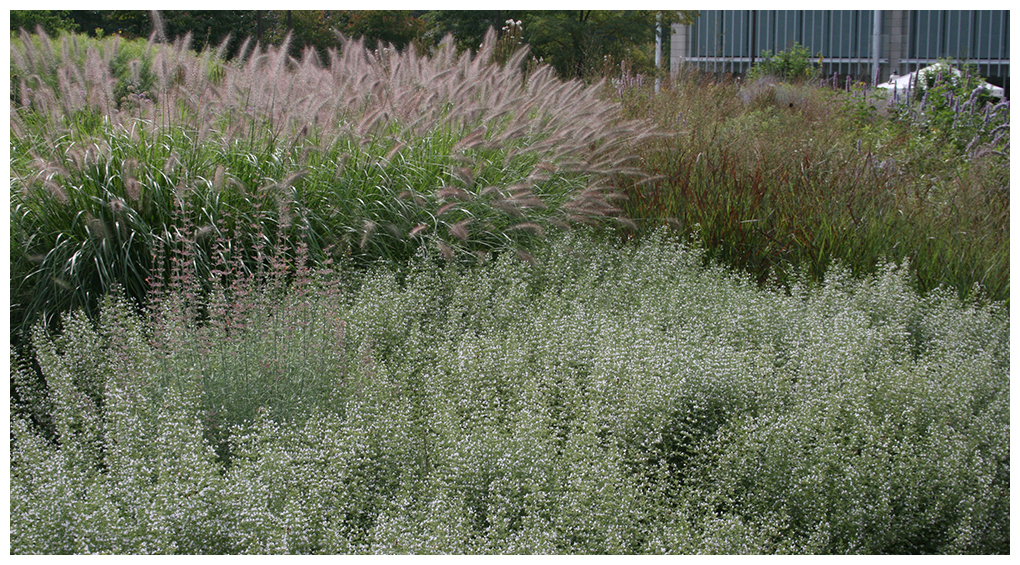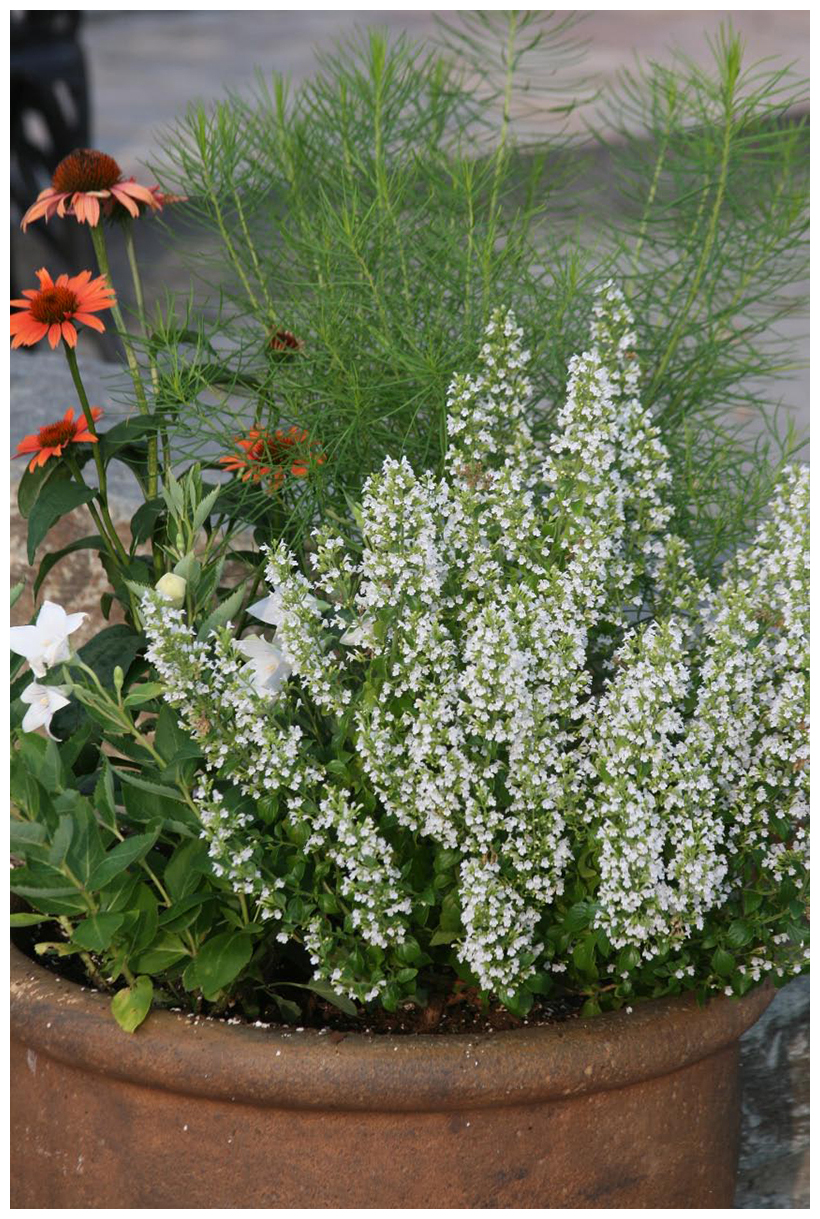Calamint – A Low Maintenance Perennial
Here’s another perennial that I think is underappreciated. Calamint, officially Calamintha nepeta, is a low maintenance perennial for the front of the garden, staying at around 18 inches in height. It has airy masses of tiny flowers in white to pale blue, sort of vaguely like baby’s breath, which does not grow well here.
When Behnke’s had a garden center on River Road in Potomac, we had some planted out in front of the Florist Shop. (They may still be there. The florist building is now the local outlet for Walpole Outdoors and the garden center is now under different ownership and is called “Petals and Plants.” I haven’t been out to that side of town in a while but I’ll be sure to check it out this fall.)
The calamint that we grew there was a cultivar called ‘White Cloud.’ It seemed to flower most of the summer into the early fall, and it was very popular with bees and butterflies. It didn’t get much care; watering in the driest weather and that was about it.
It tolerates dry soil very well and needs good drainage. When it’s done blooming you can cut it back to close to the ground and new leaves will emerge. The foliage has a nice minty fragrance. We had a lot of problems with deer browsing at Potomac, and they never bothered the calamint.
I thought I would try calamint at my place, in a partial shade situation near the road. That is a tough area due salt, piling up of snow in the winter, drying out in the summer, and so on. (If there were a sidewalk, the area between sidewalk and road is lovingly know as “the Hell Strip.” It’s not that bad, but I’ve tried many things there to no avail.) The calamint that I tried there was the bluish-flowered cultivar, called ‘Blue Cloud.’ It didn’t thrive; however, it seeded out and it pops up in the shade along the walkway. It is scrawny in the shade. The ‘Blue Cloud’ has a reputation for being a little weedy, and I concur. I recommend sticking with the white cultivars and giving it as much sun as possible.
Meanwhile, down on the National Mall, I saw a newer cultivar called ‘Montrose White’ in full bloom around Labor Day. It is used at the Kathrine Dulin Folger Rose Garden in front of the Smithsonian Arts and Industries Museum. The rose garden is a nice blend of perennials and roses, which is much more interesting than the classic rose garden, so kudos to the garden designer. ‘Montrose White’ has masses of white flowers, and it is sterile, so no self-seeding worries. The pollinators were all over it when I was there.
We carried calamint in our perennial department at Behnke’s, but it’s another plant that doesn’t look very good in a small pot on a sales table: it needs to show off in the ground or as a filler element in a mixed container. So it was never a big seller for us. Watch for it. Your local garden center may still have a few on their display tables, but you are more likely to find it next April or May. For more on calamint, see this from MOBOT, the Missouri Botanical Garden
Larry Hurley, Retired Behnke’s Horticulturist



This Post Has 0 Comments